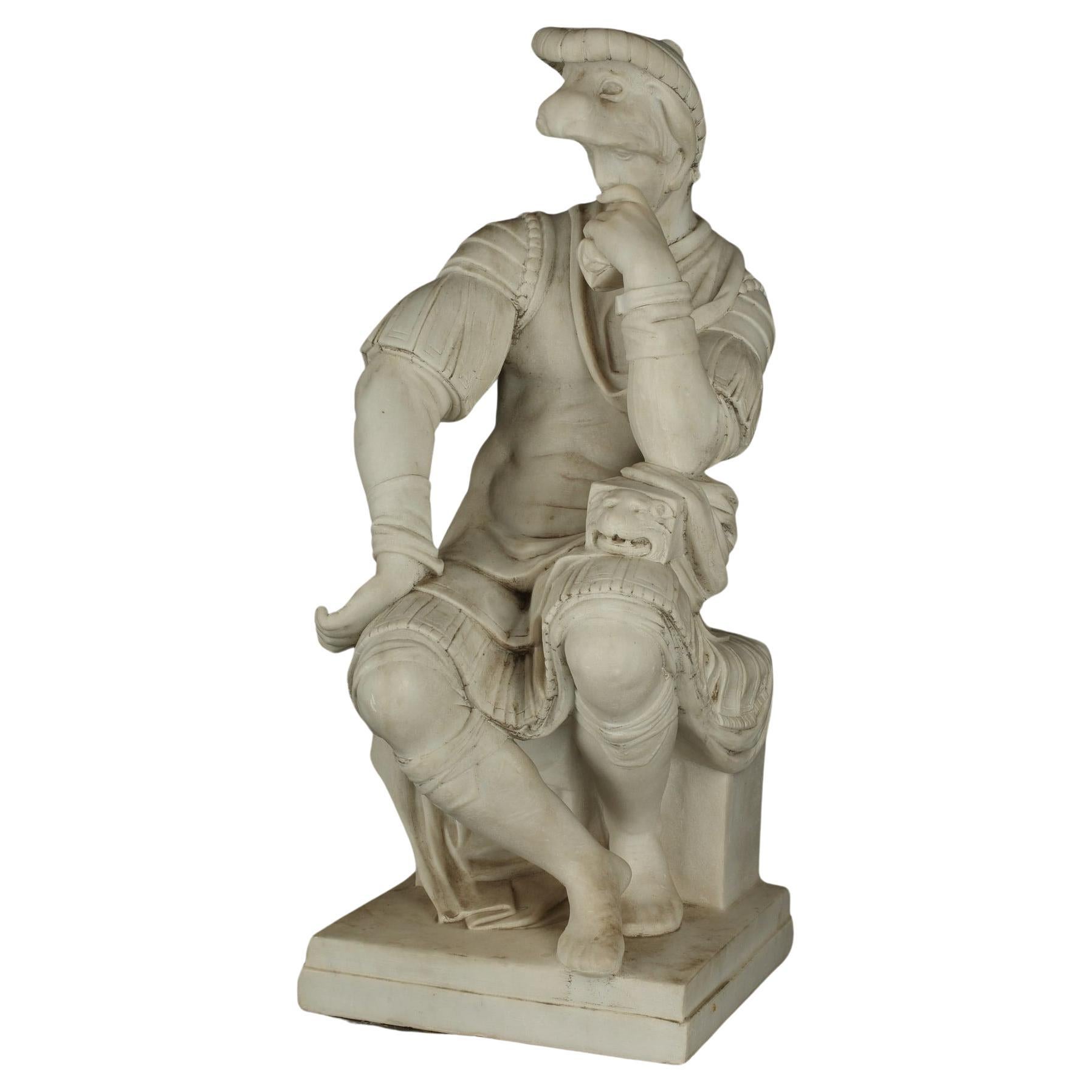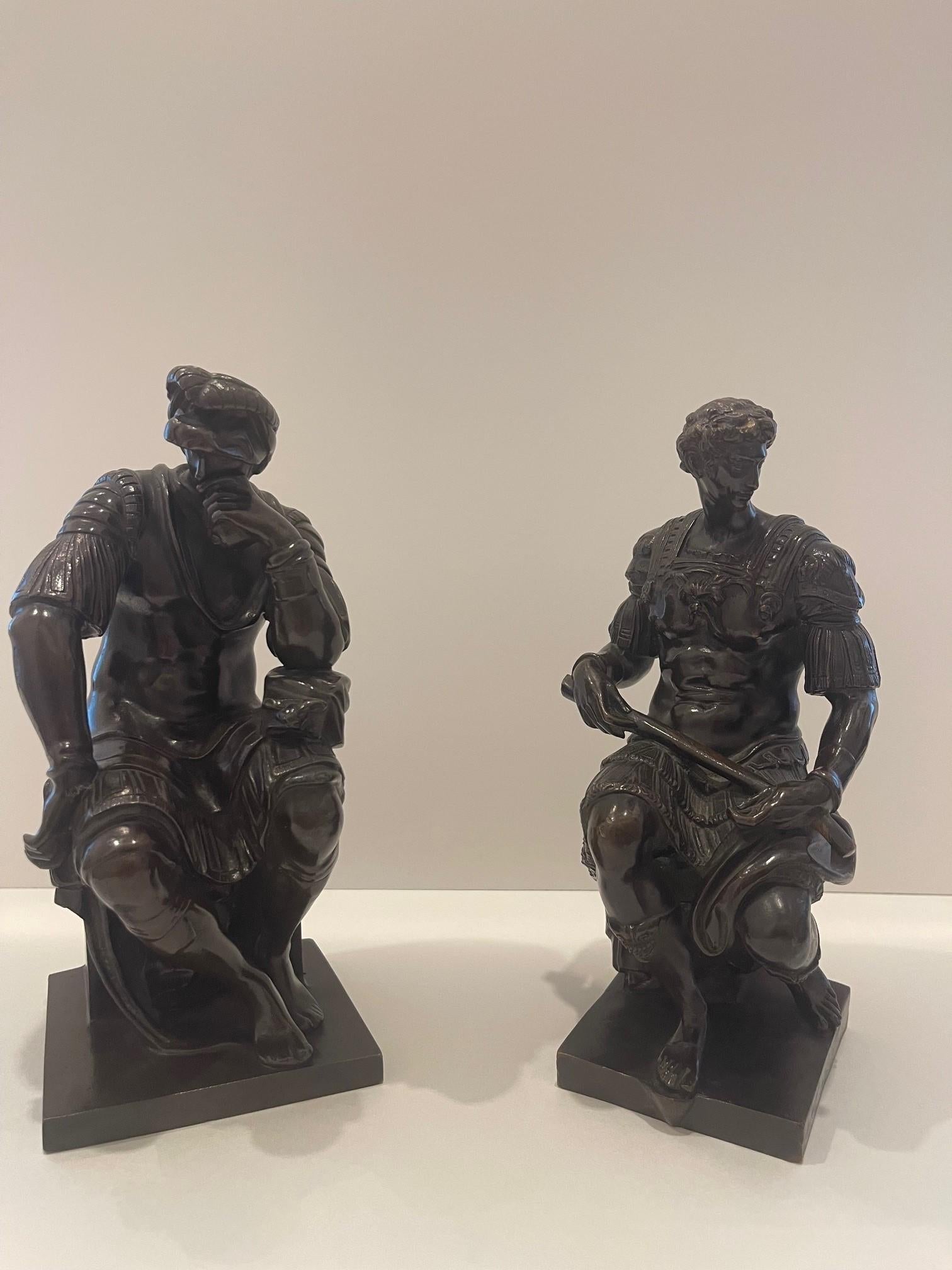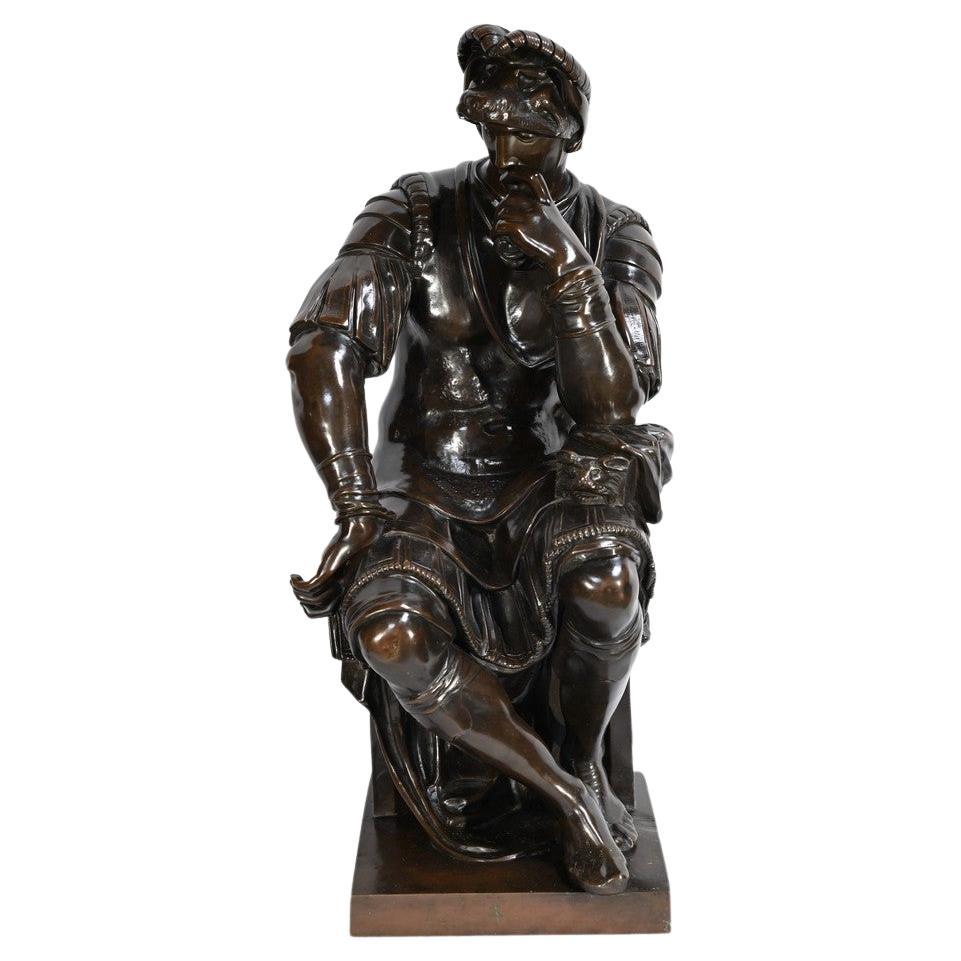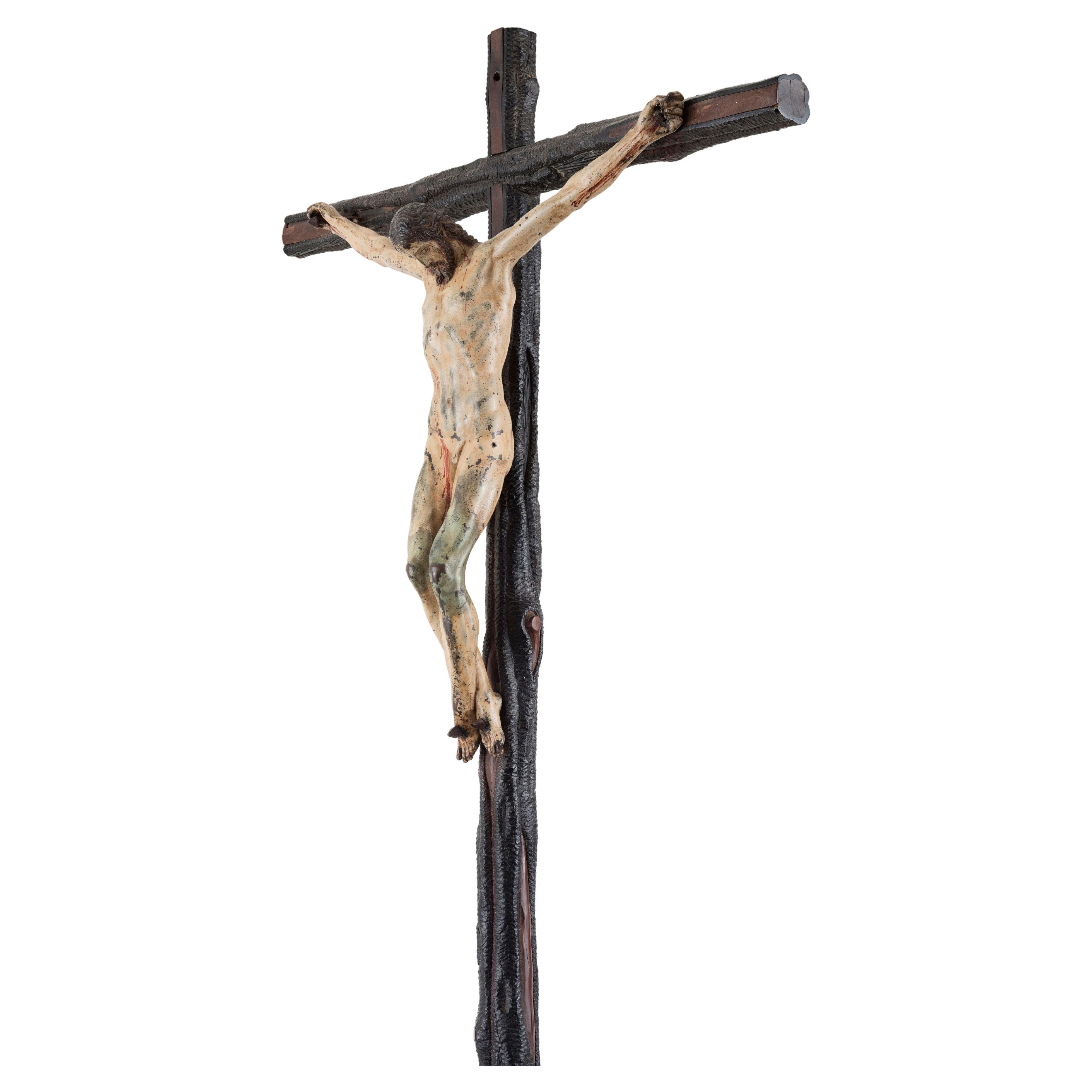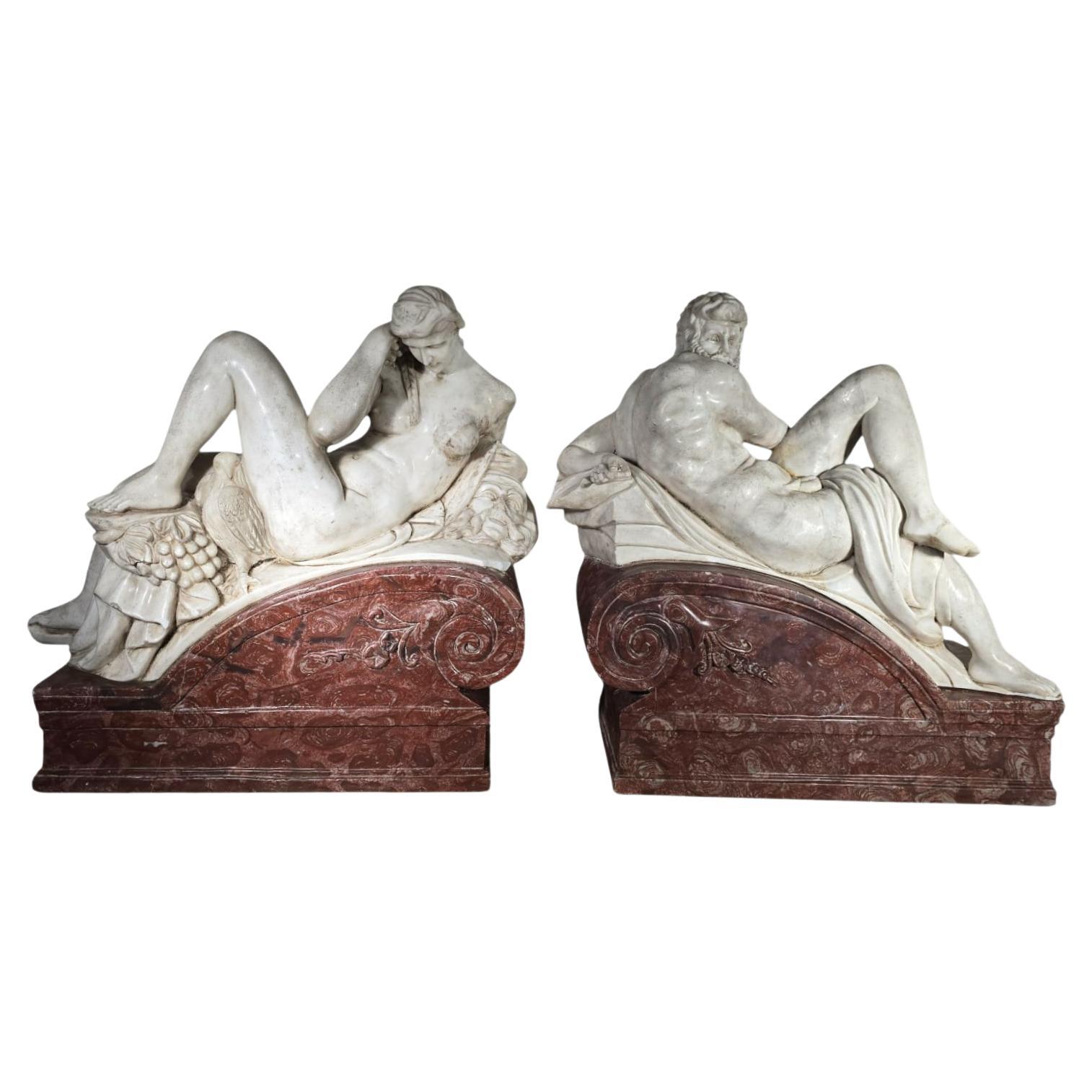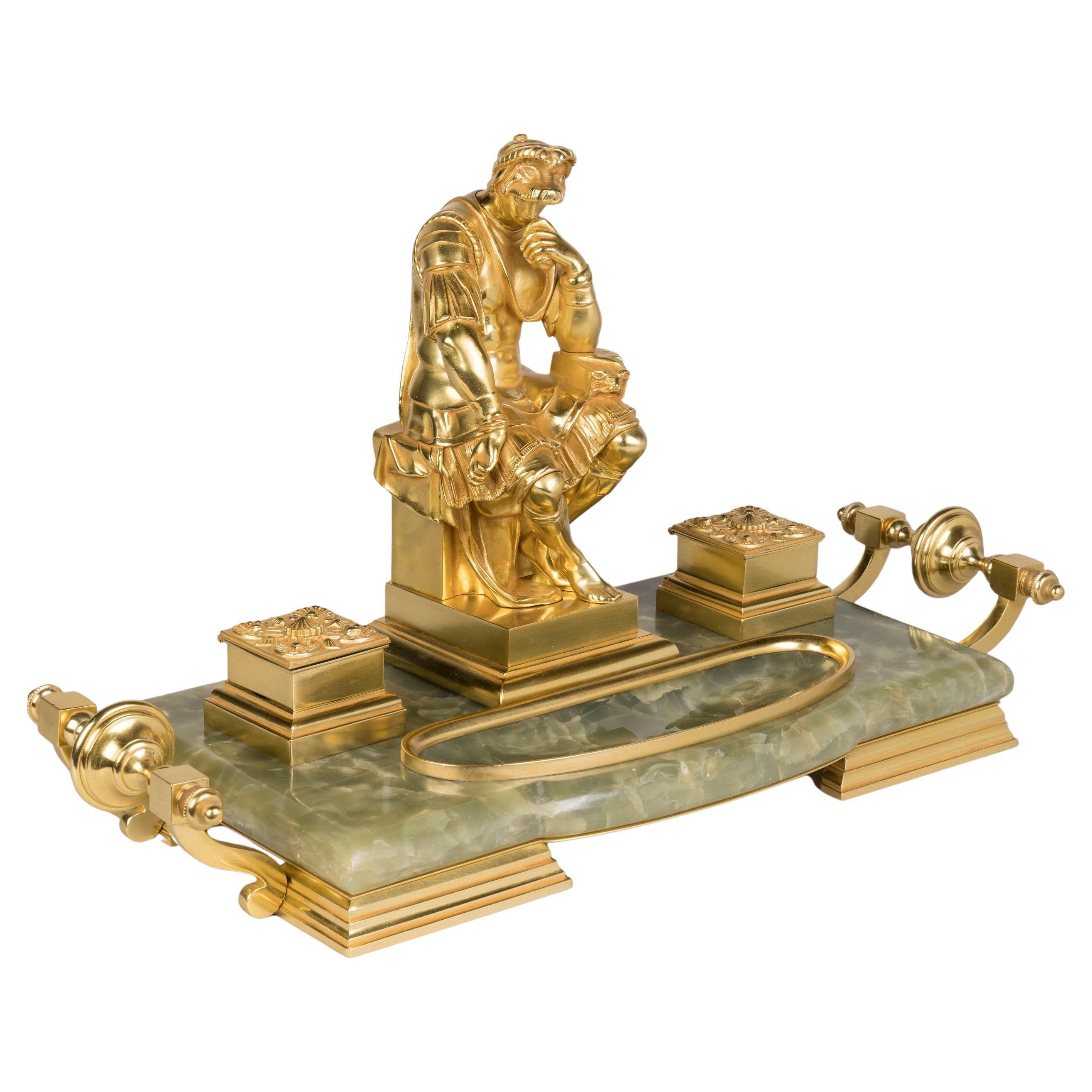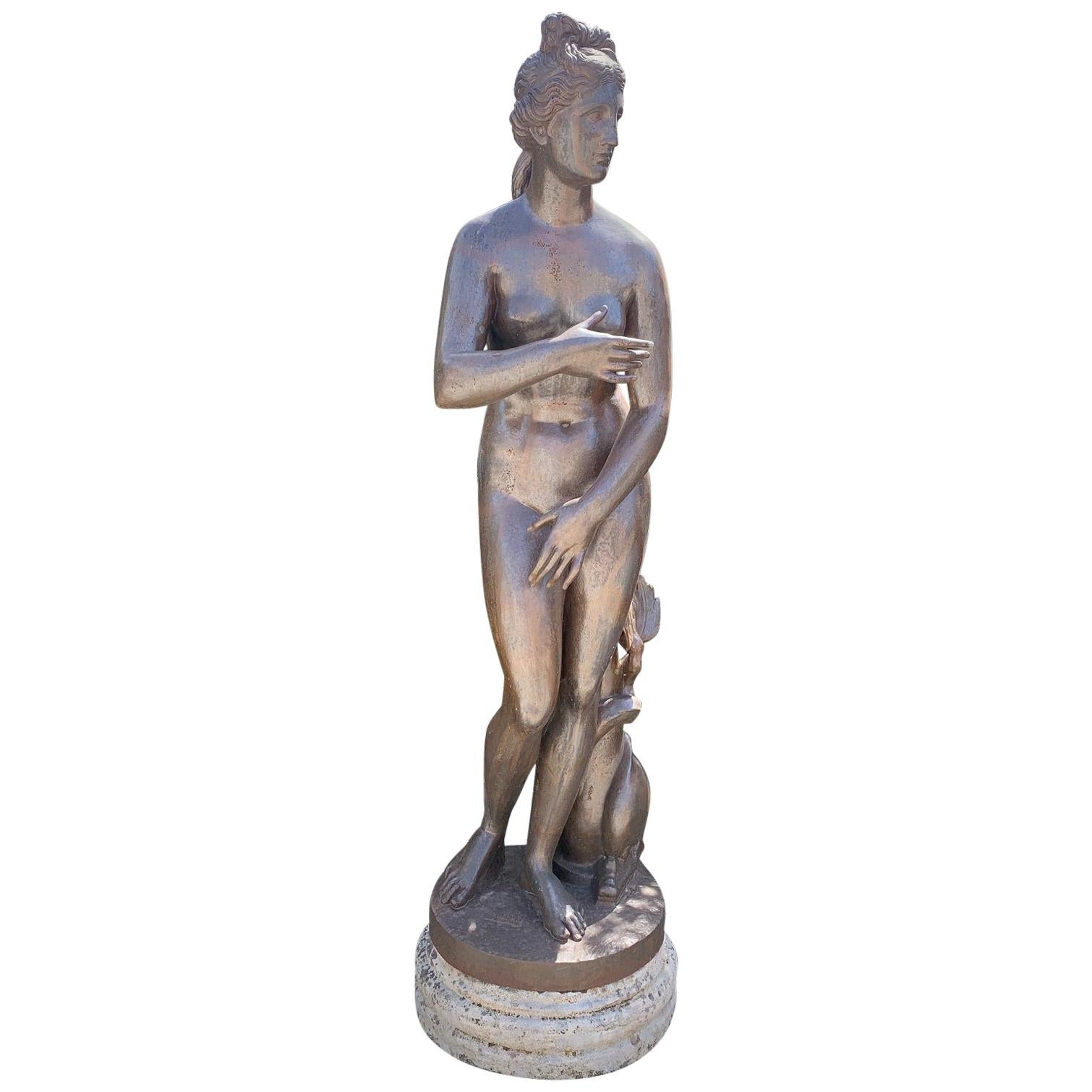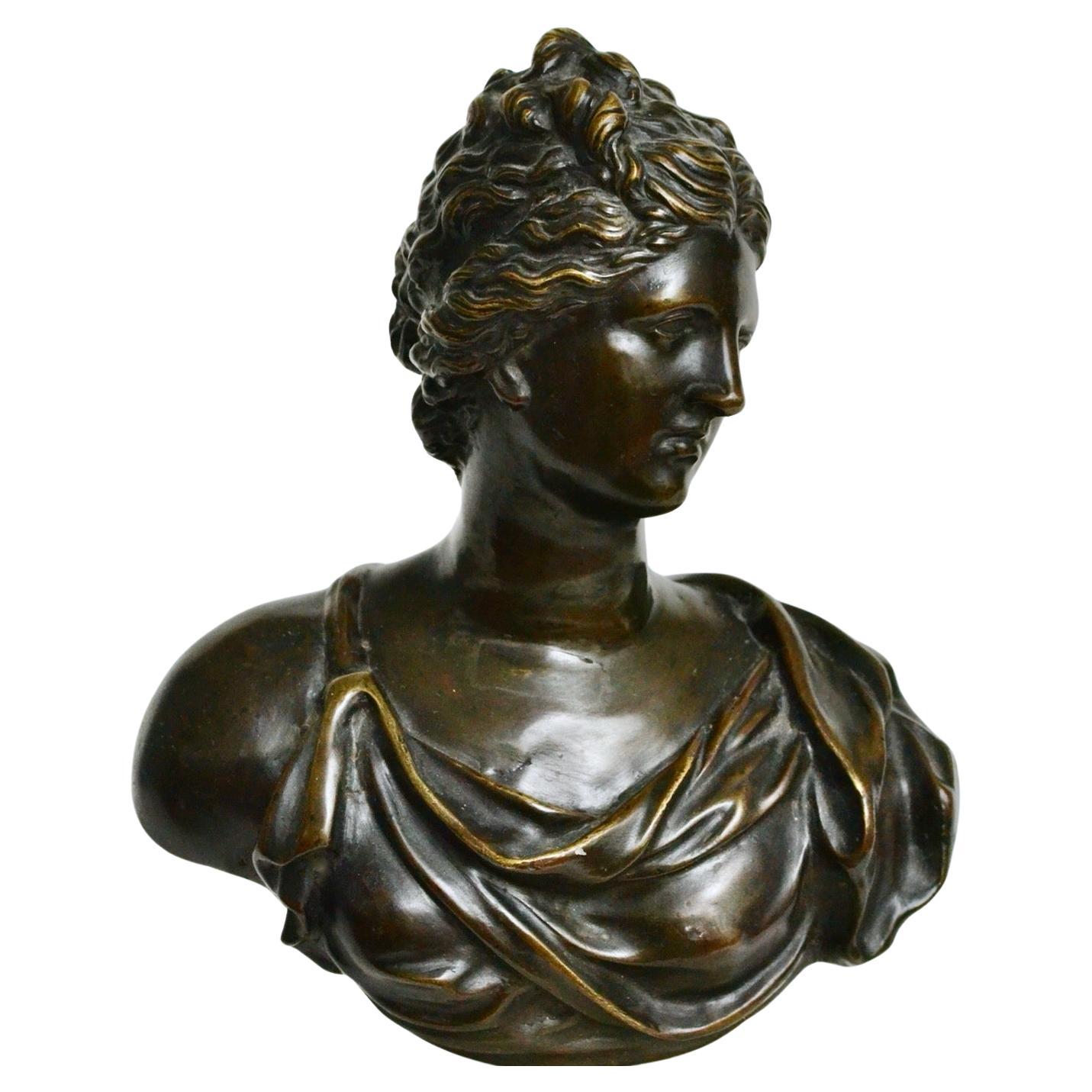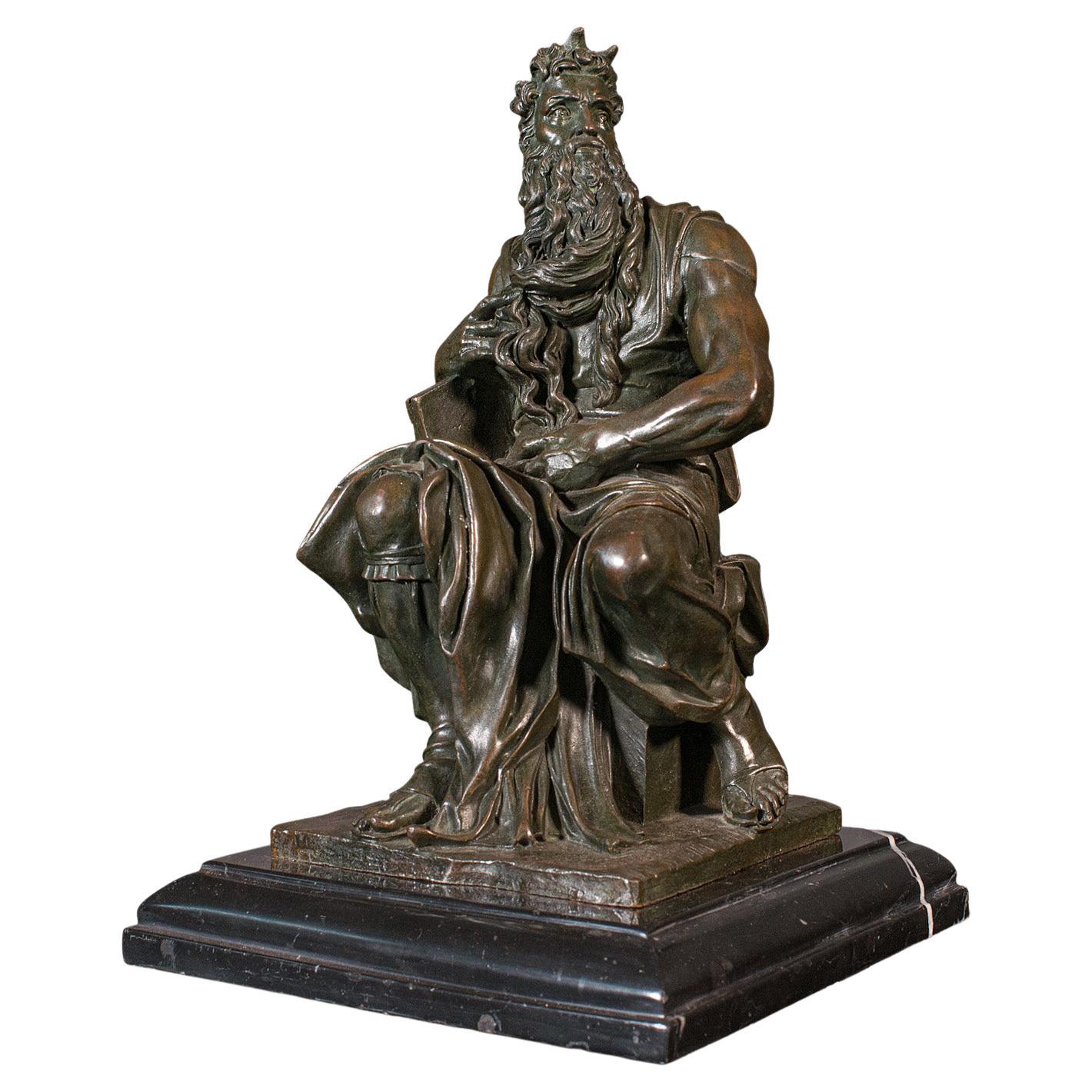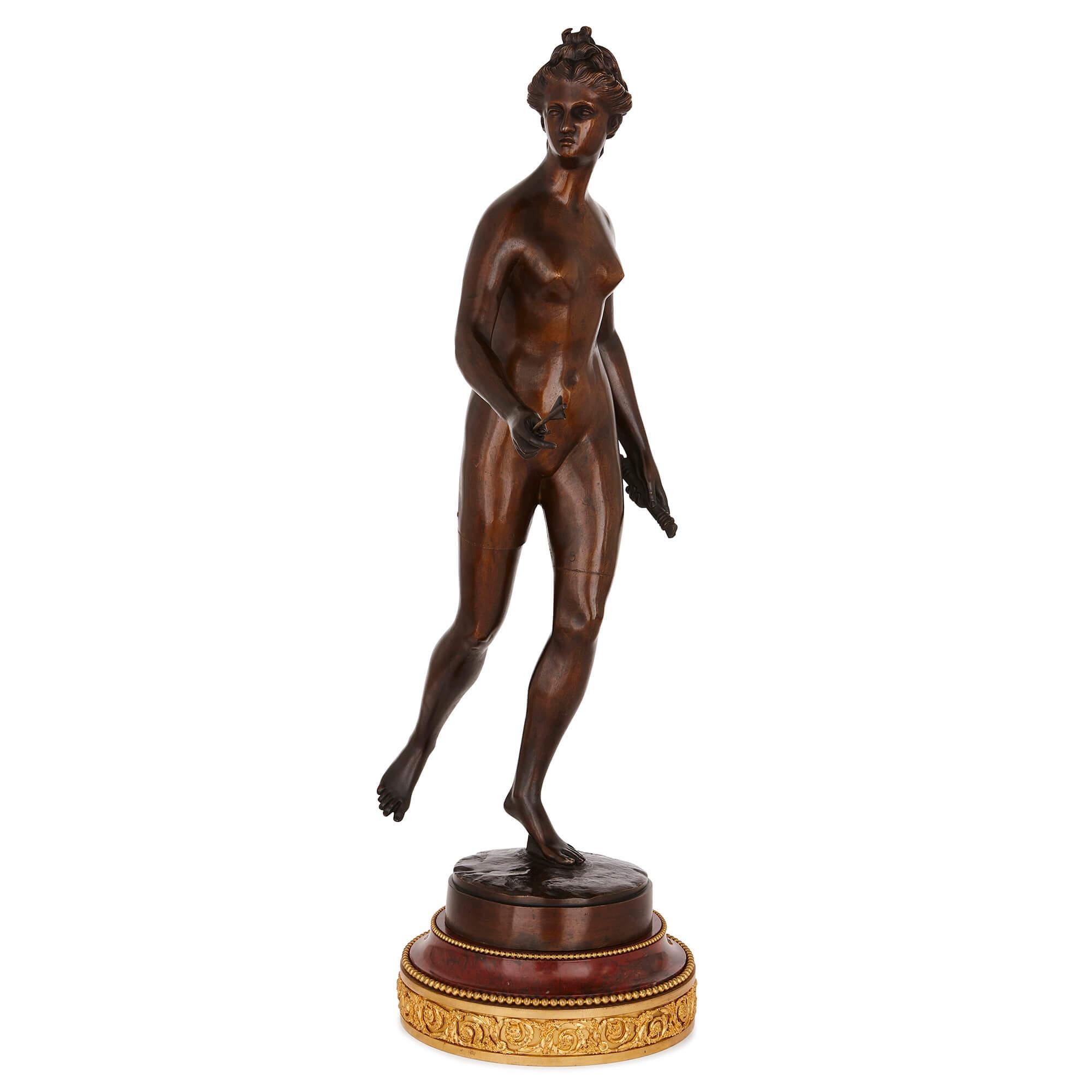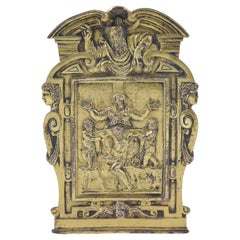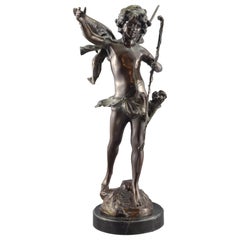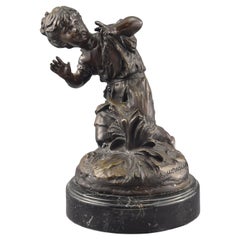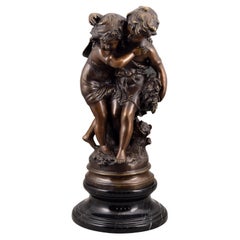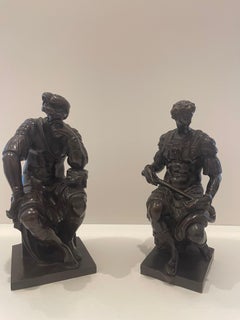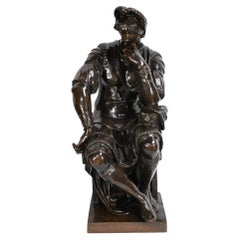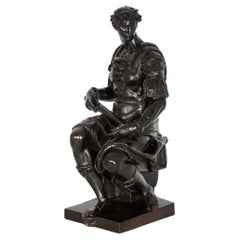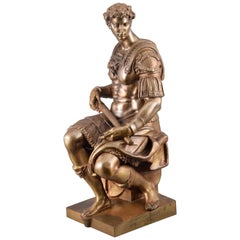
Bronze, Giuliano Di Lorenzo de Medici, France, After Michelangelo Buonarroti
View Similar Items
Want more images or videos?
Request additional images or videos from the seller
1 of 12
Bronze, Giuliano Di Lorenzo de Medici, France, After Michelangelo Buonarroti
$3,092.92List Price
About the Item
- Similar to:Michelangelo Buonarroti (Artist)
- Dimensions:Height: 18.9 in (48 cm)Width: 9.85 in (25 cm)Depth: 9.85 in (25 cm)
- Style:Neoclassical (Of the Period)
- Materials and Techniques:
- Place of Origin:
- Period:
- Date of Manufacture:19th Century
- Condition:Wear consistent with age and use. Minor losses. Minor fading.
- Seller Location:Madrid, ES
- Reference Number:Seller: ZF06331stDibs: LU2951320765542
About the Seller
4.9
Vetted Professional Seller
Every seller passes strict standards for authenticity and reliability
Established in 1985
1stDibs seller since 2017
349 sales on 1stDibs
Typical response time: 17 hours
Authenticity Guarantee
In the unlikely event there’s an issue with an item’s authenticity, contact us within 1 year for a full refund. DetailsMoney-Back Guarantee
If your item is not as described, is damaged in transit, or does not arrive, contact us within 7 days for a full refund. Details24-Hour Cancellation
You have a 24-hour grace period in which to reconsider your purchase, with no questions asked.Vetted Professional Sellers
Our world-class sellers must adhere to strict standards for service and quality, maintaining the integrity of our listings.Price-Match Guarantee
If you find that a seller listed the same item for a lower price elsewhere, we’ll match it.Trusted Global Delivery
Our best-in-class carrier network provides specialized shipping options worldwide, including custom delivery.More From This Seller
View AllGilt bronze pax board, Pietà. 16th-17th centuries, after Michelangelo Buonarroti
Located in Madrid, ES
Peacekeeper, Mercy. Golden bronze. Possibly Rome, last third of the 16th century-first quarter of the 17th century, following the model of Michelangelo Buonarroti.
Gilded bronze pla...
Category
Antique Early 17th Century European Renaissance Religious Items
Materials
Other, Bronze
Cupid. Bronze, Marble, After Models from Auguste Moreau ‘1834-1917’
Located in Madrid, ES
On a round base stands the figure of the God of Love, Cupid. The sculpture in bronze, with the iconographic attributes corresponding to this figure in classical mythology, was made b...
Category
20th Century European Neoclassical Figurative Sculptures
Materials
Marble, Bronze
Kneeled Girl, Bronze, Marble, After Models from Auguste Moreau ‘1834-1917’
Located in Madrid, ES
Lost wax casting. Base in marble.
On a base in bronze to which the earth aspect has been given, the figure of the girl and a plant are placed on her knees. The young woman appears w...
Category
20th Century European Neoclassical Figurative Sculptures
Materials
Marble, Bronze
Children, Bronze, Marble, After Auguste Moureau
By Auguste Moreau
Located in Madrid, ES
Lost wax bronze. Model of Auguste Moureau. marble base
Patinated bronze with two children together, the boy holding some flowers. The piece that makes up this lot follows the model...
Category
20th Century European Other Figurative Sculptures
Materials
Marble, Bronze
Bull, Bronze, After Benlliure Gil, Mariano
By Mariano Benlliure y Gil
Located in Madrid, ES
Bull. Bronze. Following the model of BENLLIURE GIL, Mariano (Valencia 1862-Madrid, 1947).
Mariano Benlliure was a Spanish sculptor, a precocious cr...
Category
20th Century Spanish Other Animal Sculptures
Materials
Bronze, Other
Young Psyche, Bronze, Stone, After Auguste Moreau
Located in Madrid, ES
Young Psyche. Bronze, stone. Following models of Auguste Moreau.
Patinated bronze sculpture on a circular stone base that shows a young girl with butterfly wings, following a habit...
Category
20th Century European Other Figurative Sculptures
Materials
Marble, Bronze
You May Also Like
Lorenzo de Medici Marble Sculpture After Michelangelo
Located in New York, NY
Our antique (late 19th century) white marble Grand Tour sculpture of Lorenzo de Medici, Duke of Urbino (1492-1515). Sculpture 22 by 9 by 10 inches.
The sculpture, carved from Carr...
Category
Antique Late 19th Century Italian Grand Tour Figurative Sculptures
Materials
Carrara Marble
Two French Bronze Figures of Giuliano and Lorenzo De' Medici
Located in Flower Mound, TX
This is a wonderful pair of French bronzes, Lorenzo di' Piero de' Medici also known as Lorenzo the Magnificent, and his younger brother Giuliano. Lorenzo is the larger of the two figures measuring 8.3" in height and 3.7" wide, and 3.4" deep, Giuliano is 8" high and 2.7" wide and 3.2" deep. Both are modelled opposing, seated, and clad in armor. These bronzes are from the 19th century, but from differing parts of the century. The model of Lorenzo is late 19th century, and the quality of the casting is good but not as good as that of Giuliano who would appear to be from the mid part of the 19th century. They make a good companion pair, but did not form part of the same casting run, and have been later paired up. Both have great coloring, with a similar dark brown and green patina.
Provenance: These were part of the Fulwood Collection
The Fulwood Collection comes from a Grade II listed rectory in the North of England. Formerly the childhood home of Sir Douglas Bader. The rectory was acquired by the late owner approximately 15 years ago. The house was formerly split into two separate houses, and with care he lovingly refurbished it back into a single house and refurnished in a blend of the Grand Tour style with Welsh and English provincial tastes. This property contained fine furniture, works of art, paintings, ceramics and other miscellaneous items some of which have been purchased by “The Englishman’s Antiques”
Category
Antique Mid-19th Century French Figurative Sculptures
Materials
Bronze
Bronze sculpture “Laurent de Medicis” after Michelangelo, 19th
By Michelangelo
Located in HÉRIC, FR
An important 19th-century bronze sculpture Michelangelo (1475-1564).
This Florentine sculptor, painter, architect, and poet is known for his monumental works such as the ceiling fres...
Category
Antique Mid-19th Century French Figurative Sculptures
Materials
Bronze
Grand Tour Bronze Sculpture Giuliano de Medici after the Antique, 19th century
Located in Shippensburg, PA
AFTER MICHELANGELO OF ANTIQUITY
Grand Tour Model of Giuliano de Medici from the Medici Chapel in Florence
Patinated sand-cast bronze numbered on the back corner "5505", otherwise u...
Category
Early 20th Century European Grand Tour Figurative Sculptures
Materials
Bronze
Rare and important painted bronze Crucifix after a model by Michelangelo
By Michelangelo Buonarroti
Located in Leesburg, VA
A rare and very fine bronze corpus of Christ after a model by Michelangelo, cast ca. 1597-1600 by Juan Bautista Franconio and painted in 1600 by Francisco Pacheco in Seville, Spain.
The present corpus reproduces a model attributed to Michelangelo. The best known example, lesser in quality, is one on display at the Metropolitan Museum of Art (MET).
The association of this corpus with Michelangelo was first brought to light by Manuel Gomez-Moreno (1930-33) who studied the wider circulated casts identified throughout Spain. The attribution to Michelangelo was subsequently followed by John Goldsmith-Phillips (1937) of the MET and again by Michelangelo expert, Charles de Tolnay (1960).
While Michelangelo is best known for his monumental works, there are four documented crucifixes he made. The best known example is the large-scale wooden crucifix for the Church of Santa Maria del Santo Spirito in Florence, made in 1492 as a gift for the Prior, Giovanni di Lap Bicchiellini, for allowing him to study the anatomy of corpses at the hospital there. In 1562, Michelangelo wrote two letters to his nephew, Lionardo, indicating his intention to carve a wooden crucifix for him. In 1563 a letter between Lionardo and the Italian sculptor Tiberio Calcagni, mentions this same crucifix (a sketch of a corpus on the verso of a sheet depicting Michelangelo’s designs for St. Peter’s Basillica [Palais des Beaux-Arts in Lille] may reproduce this). That Michelangelo was working on small corpora in the last years of his life is further evidenced by the small (26.5 cm) unfinished wooden crucifix located at the Casa Buonarroti, considered his last known sculptural undertaking. Michelangelo’s contemporary biographer, Giorgio Vasari additionally cites that Michelangelo, in his later years, made a small crucifix for his friend, Menighella, as a gift.
Surviving sketches also indicate Michelangelo’s study of this subject throughout his career, most notably during the end of his life but also during the 1530s-40s as he deepened his spiritual roots. The occasional cameo of crucified Christ’s throughout his sketched oeuvre have made it challenging for scholars to link such sketches to any documented commissions of importance. All the while, in consideration that such objects were made as gifts, it is unlikely they should be linked with commissions.
Nonetheless, a number of theories concerning Michelangelo’s sketches of Christ crucified have been proposed and some may regard the origin of the present sculpture. It has been suggested that the corpus could have its impetus with Michelangelo’s work on the Medici Chapel, whose exclusive design was given to the master. It is sensible smaller details, like an altar cross, could have fallen under his responsibility (see for example British Museum, Inv. 1859,0625.552). Others have noted the possibility of an unrealized large marble Crucifixion group which never came to fruition but whose marble blocks had been measured according to a sheet at the Casa Buonarroti.
A unique suggestion is that Michelangelo could have made the crucifix for Vittoria Colonna, of whom he was exceedingly fond and with whom he exchanged gifts along with mutual spiritual proclivities. In particular, Vittoria had an interest in the life of St. Bridget, whose vision of Christ closely resembles our sculpture, most notably with Christ’s proper-left leg and foot crossed over his right, an iconography that is incredibly scarce for crucifixes. The suggestion could add sense to Benedetto Varchi’s comment that Michelangelo made a sculpted “nude Christ…he gave to the most divine Marchesa of Pescara (Vittoria Colonna).”
Of that same period, two sketches can be visually linked to our sculpture. Tolnay relates it to a sketch of a Crucified Christ at the Teylers Museum (Inv. A034) of which Paul Joannides comments on its quality as suggestive of preparations for a sculptural work. Joannides also calls attention to a related drawing attributed to Raffaello da Montelupo copying what is believed to be a lost sketch by Michelangelo. Its relationship with our sculpture is apparent. Montelupo, a pupil of Michelangelo’s, returned to Rome to serve him in 1541, assisting with the continued work on the tomb of Pope Julius II, suggesting again an origin for the corpus ca. 1540.
The earliest firm date that can be given to the present corpus is 1574 where it appears as a rather crudely conceived Crucifixion panel, flanked by two mourners in low-relief and integrally cast for use as the bronze tabernacle door to a ciborium now located at the Church of San Lorenzo in Padula. Etched in wax residue on the back of the door is the date, 27 January 1574, indicating the corpus would have at least been available as a model by late 1573.
The Padula tabernacle was completed by Michelangelo’s assistant, Jacopo del Duca and likely has its origins with Michelangelo’s uncompleted tabernacle for the Basilica of St. Mary of the Angels in Rome.
The impetus for the Padula tabernacle’s Crucifixion panel begins with a series of late Crucifixion sketches by Michelangelo, depicting a scene of Christ crucified and flanked by two mourners (see British Museum Inv. 1895.0915.510; Ashmolean Museum Inv. 1846.89, KP II 343 recto; Windsor Castle RCIN 912761 recto; and Louvre Inv. 700). A faintly traced block possibly intended for sculpting the sketch of the crucified Christ on its recto was discovered by Tolnay on a version of the composition at Windsor Castle. The Windsor sketch and those related to it appear to have served as preparatory designs for what was probably intended to become the Basilica of St. Mary’s tabernacle door. Vasari documents that the project was to be designed by Michelangelo and cast by his assistant, Jacopo del Duca. Michelangelo died before the commission was complete, though on 15 March 1565, Jacopo writes to Michelangelo’s nephew stating, “I have started making the bronze tabernacle, depending on the model of his that was in Rome, already almost half complete.” Various circumstances interrupted the completion of the tabernacle, though its concept is later revitalized by Jacopo during preparations to sell a tabernacle, after Michelangelo’s designs, to Spain for Madrid’s El Escorial almost a decade later. The El Escorial tabernacle likewise encountered problems and was aborted but Jacopo successfully sold it shortly thereafter to the Carthusians of Padula.
An etched date, 30 May 1572, along the base of the Padula tabernacle indicates its framework was already cast by then. A 1573 summary of the tabernacle also describes the original format for the door and relief panels, intended to be square in dimension. However, a last minute decision to heighten them was abruptly made during Jacopo’s negotiations to sell the tabernacle to King Phillip II of Spain. Shortly thereafter the commission was aborted. Philippe Malgouyres notes that the Padula tabernacle’s final state is a mixed product of the original design intended for Spain’s El Escorial, recycling various parts that had already been cast and adding new quickly finished elements for its sale to Padula, explaining its unusually discordant quality, particularly as concerns the crudeness of the door and relief panels which were clearly made later (by January 1574).
Apart from his own admission in letters to Spain, it is apparent, however, that Jacopo relied upon his deceased master’s designs while hastily realizing the Padula panels. If Michelangelo had already earlier conceived a crucifix model, and Jacopo had access to that model, its logical he could have hastily employed it for incorporation on the door panel to the tabernacle. It is worth noting some modifications he made to the model, extending Christ’s arms further up in order to fit them into the scale of the panel and further lowering his chin to his chest in order to instill physiognomic congruence. A crude panel of the Deposition also follows after Michelangelo’s late sketches and is likewise known by examples thought to be modifications by Jacopo based upon Michelangelo’s initial sculptural conception (see Malgouyres: La Deposition du Christ de Jacopo del Duca, chef-d’oeuvre posthume de Michel-Ange).
Jacopo’s appropriation of an original model by Michelangelo for more than one relief on the Padula tabernacle adds further indication that the crucifix was not an object unique to Jacopo’s hand, as few scholars have posited, but rather belongs to Michelangelo’s original...
Category
Antique 16th Century Renaissance Figurative Sculptures
Materials
Bronze
Marble Sculptures After Michelangelo Buonarroti – "Day" and "Night" – Early 20th
Located in Madrid, ES
Marble Sculptures After Michelangelo Buonarroti – "Day" and "Night" – Early 20th Century
Magnificent pair of large marble sculptures, inspired by Michelangelo Buonarroti's masterpie...
Category
Early 20th Century Figurative Sculptures
Materials
Carrara Marble
$7,451 Sale Price
20% Off
Recently Viewed
View AllMore Ways To Browse
Michelangelo Buonarroti
Sacristy Furniture
Lorenzo De Medici
Giuliano De Medici
Ancient Roman Bronze
Carved Plaster
Winged Cherub
Art Deco Glass Figure
Marble Dancer
Art Deco Cars
Marble Sculpture Plinth
Nose Sculpture
Ceramic Sculpture Woman
Flute Sculpture
Matching Sculptures
Bronze Figure After Antique
French Bas Relief
Antique Satyr
